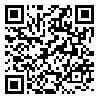BibTeX | RIS | EndNote | Medlars | ProCite | Reference Manager | RefWorks
Send citation to:
URL: http://ioh.iums.ac.ir/article-1-474-en.html

 , Majid Motamedzadeh
, Majid Motamedzadeh 
 , Heidar Mohammadi *
, Heidar Mohammadi * 
 , Majid Habibi mohraz
, Majid Habibi mohraz 
 , Hadi Bayat
, Hadi Bayat 
 , Maziyar Arassi
, Maziyar Arassi 
 , Saeid Musavi
, Saeid Musavi 
 , Iraj Noori Javadi
, Iraj Noori Javadi 

Background and Aim: Casting workers are facing with ergonomics hazards such as overload in Manual Material Handling (MMH) tasks which expose them to risk of work-related musculoskeletal disorders (WMSDs). There are several methods to determine acceptable weight among which, Snook table is one of the oldest one. The aim of the study was to assess prevalence of WMSDs and to investigate MMH tasks by Snook tables among casting workers.
Materials and methods: This cross-sectional study was conducted among 50 casting workers occupying in all of the five MMH tasks including lifting, lowering, carrying, pushing and pulling. Nordic Musculoskeletal Questionnaire (NMQ) and concise Snook tables were used to gathering required data. Statistical analyses were done using SPSS 16.0.
Results: The most common musculoskeletal disorders in one year prior to the study were hand wrist disorders (84%), low back pain (74%) and neck disorders (72%), respectively. The Snook tables results indicated that significant differences were found between acceptable weights and workers exerted load in lifting and lowering tasks (p<0.05) and also between acceptable forces and workers exerted force in pushing/pulling tasks (p<0.05). Overall, in most of cases exerted loads exceeded suggested weights.
Conclusion: Regarding to results of the study, ergonomics interventions should focus on redesign of MMH tasks, improvement of workplace physical conditions and providing ergonomics instrumentsReceived: 2011/08/9 | Accepted: 2013/08/26 | Published: 2013/08/26
| Rights and permissions | |
 |
This work is licensed under a Creative Commons Attribution-NonCommercial 4.0 International License. |



